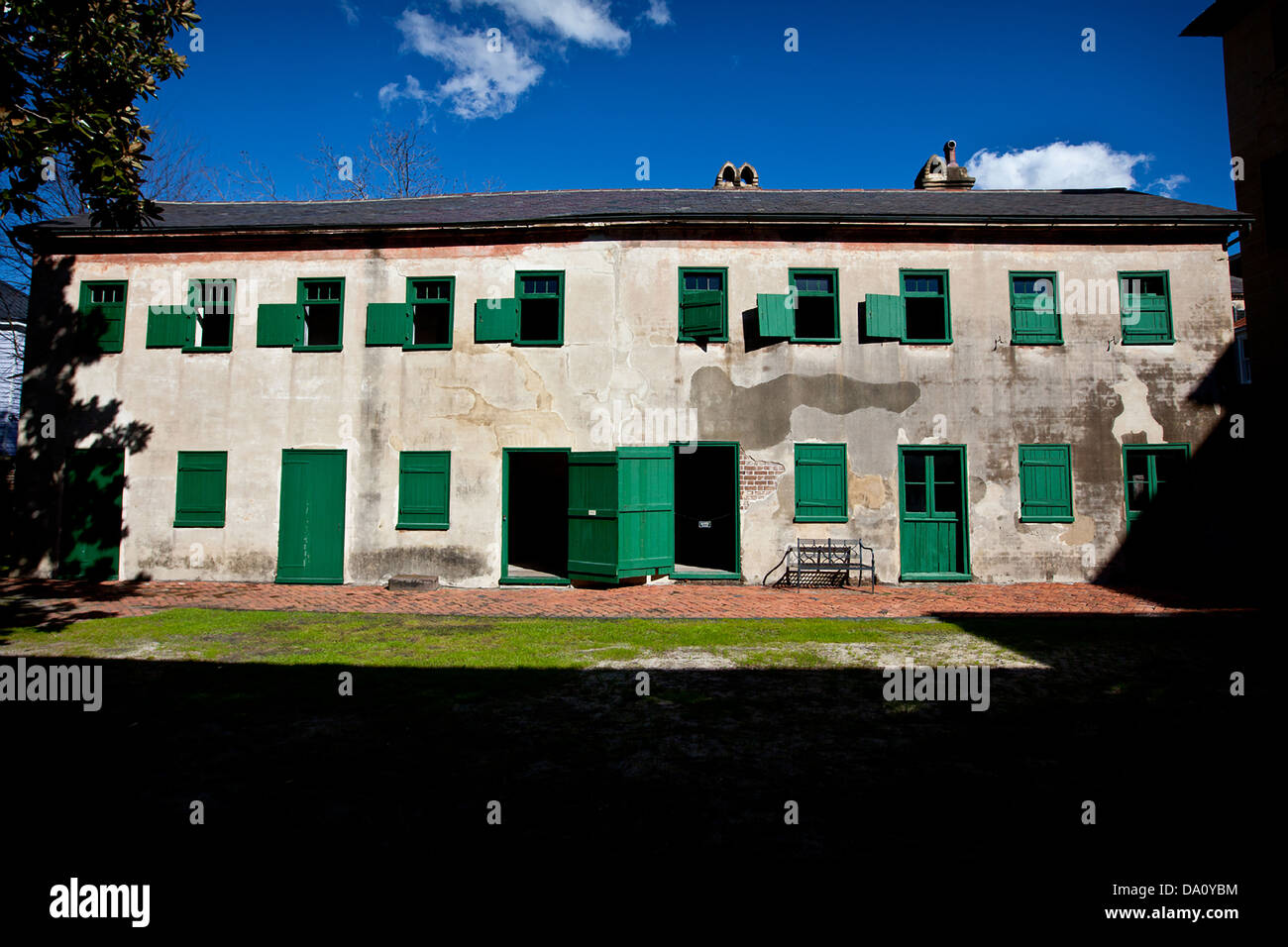Table Of Content

When he died suddenly in a carriage accident, his vast holdings were divided between his wife, Henrietta Wyatt Aiken, and his only son, William Aiken Jr. Joe Demarest, with Historic Charleston Foundation, visits the Aiken-Rhett House to see the designer vignettes decorating the historic house during The Charleston Festival on March 15, 2024. In essence, the Aiken-Rhett House’s location provides visitors with a gateway to explore the multifaceted charm of Charleston, from its storied past to its dynamic present. Whether you’re a history buff, a foodie, or someone simply looking to soak in the city’s ambiance, there’s something for everyone in this historic enclave. Interior stalls with troughs, which were used for feeding, still exist with worn areas where livestock chewed them many years ago. On the upper level of this building, which is not open for touring, more bedrooms and storage areas exist for the enslaved workers who tended to the animals and driving.
One Square Mile: The Boroughs, Charleston, South Carolina Guide - The Washington Post - The Washington Post
One Square Mile: The Boroughs, Charleston, South Carolina Guide - The Washington Post.
Posted: Wed, 19 Jun 2019 02:50:10 GMT [source]
responses to “Aiken-Rhett House: A Family Legacy”

Upon Henrietta’s death, the house was divided between her children and their heirs. Two sons, I’On Rhett and Andrew Burnet Rhett, Jr. continued to live in the house until the mid-twentieth century. "We’re not people that are just going to ignore that this is here. We’re in the heart of history, and we want this to be an opportunity for people to understand the space," Holian said. Furniture could not be moved, art could not be affixed to the walls and even lamps had to be battery-operated, as power in the home was a constraint of the antebellum-era home.

Recent Articles
The house’s preservation, rather than restoration, approach ensures that visitors experience the property as it was in the 1850s. The wear and tear, the layers of paint, and the untouched artifacts all tell a story, making the Aiken-Rhett House not just a museum, but a living narrative. The mansion’s design is a blend of urban sophistication and rural plantation aesthetics. Its expansive double piazzas, intricate ironwork, and stately brick facade are emblematic of Charleston’s architectural grandeur during the 19th century. Inside, the original wallpapers, ornate chandeliers, and period-appropriate furnishings transport visitors back to an era of Southern elegance. The gallery features a four-paneled skylight and an ornate plaster cornice adorned with fruit and leaf motifs.
Request a Visitors Guide
Under Aiken’s ownership, the house underwent significant expansions, reflecting the family’s rising prominence and the city’s growing cosmopolitan nature. Nathaniel Russell arrived in Charleston from Bristol, Rhode Island in 1765 and, thanks to extensive contacts in his home colony, established himself as a successful merchant and slave trader. His 1789 marriage to Sarah Hopton Russell produced two daughters, Alicia and Sarah, and in 1808 the Russell family moved to their new townhome at 51 Meeting Street.
A Different Look at Historic Homes of the South (Published 2019) - The New York Times
A Different Look at Historic Homes of the South (Published .
Posted: Wed, 26 Jun 2019 07:00:00 GMT [source]
A perennial spring visitor draw goes beyond Charleston home and garden tours
In order to raise the capital he was forced to sell the home to William Aiken in 1827. That same year the South Carolina Canal and Railroad Company was incorporated and Aiken – for whom the city of Aiken was named – was designated its first president. At the back of the house, a laundry business was believed to have been operated by freed slaves after the Emancipation Act, and that room is now on display. The Historic Charleston Foundation manages the property 'preserved as found,' conserving but not restoring it.
The Dock Street Theatre, a short walk from the Aiken-Rhett House, is America’s first theater and still hosts performances today. Additionally, the Old Slave Mart Museum on Chalmers Street provides a sobering look into the city’s role in the transatlantic slave trade. A successful businessman, rice planter, distinguished politician and governor of South Carolina, William Aiken Jr. was one of the state’s wealthiest citizens. Following a well-established tradition among Charleston’s elite, Governor Aiken and his wife enjoyed an extensive European Grand Tour and returned with magnificent fine art and furnishings for their renovated house.
The addition of the art gallery would be the last significant change to the house. A sea merchant named John Robinson built the house in 1817, but after only eight years in the house he was thrown into dire financial straights when his ships were lost at sea. William Aiken Sr. bought it in 1827 and in 1833 his son, William Aiken Jr., a future governor and member of Congress, made the house his family's primary residence. Aiken, an Irish immigrant who had accumulated a large fortune as one of the city’s leading merchants, used the house as a rental property.
Insight into Lives of the Enslaved at ARH
This untouched and unfiltered piece of living history is what makes this museum a popular tourist attraction in Charleston. One vignette was designed by the Historic Charleston Foundation, in the slave quarters behind the home. Staff provided photos, artifacts and information on the enslaved Africans who maintained the house and property while the Aiken family lived there. Nestled in the historic heart of Charleston, the Aiken-Rhett House stands as a beacon of antebellum elegance and architectural grandeur. This historic mansion, with its preserved structures and intricate detailing, offers visitors a rare glimpse into the opulence and intricacies of the pre-Civil War era. The house, with its authentic furnishings and well-preserved interiors, paints a vivid picture of life in the 19th century, making it a treasure trove for history buffs and architecture enthusiasts.
One is the kitchen and laundry and the other a carriage and stable house with sleeping quarters above. Built in 1820 by merchant John Robinson, the Aiken-Rhett House is a testament to the architectural and cultural evolution of Charleston. In 1833, the property was acquired by William Aiken Jr., a governor of South Carolina and one of the state’s wealthiest inhabitants.
The Foundation invites the community to celebrate these Award Winners on Thursday, April 25th at 6 pm for the Awards Ceremony at First Baptist Church immediately followed by a reception at the Nathaniel Russell House Museum. Holian, of the Historic Charleston Foundation, said the goal of the Designer Vignettes event is to marry design and preservation, and to see the Aiken-Rhett House through a different lens. However, Holian said that does not mean the foundation is ignoring the darker parts of the home's history. “We are from Savannah, which is also a historic city, so we have the utmost respect and reverence for old houses.
For book lovers, Blue Bicycle Books offers a curated selection of new, used, and rare books, with a special focus on local authors and Charleston’s history. Visiting the Aiken-Rhett House is not just about exploring a historic mansion; it’s about stepping back in time and experiencing the complexities and nuances of a bygone era. Whether you’re a history buff, an architecture enthusiast, or simply curious, the Aiken-Rhett House offers a rich and immersive experience. A larger staircase was constructed starting on the main level, which rose the entire three stories of the structure. This new staircase, while not original to the house, became the main passageway.

No comments:
Post a Comment